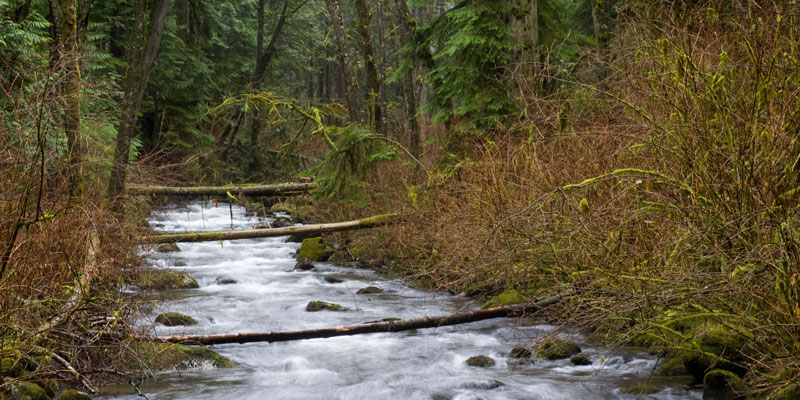Human Impacts on Water Quantity and Quality, the Implications for Socio-economic Processes, and Policy Development in the South Saskatchewan River Basin
Principal Investigator - Leland Jackson, Professor, University of Calgary (2005-2007)

Challenge
Human activity and development in Western Canada have ecological and socio-economic impacts on rivers and reservoirs. An example of this is the Eastern Slope drainages of the Rocky Mountains which are a major water source for the prairie provinces as well as a drinking water source for approximately 4 million people. The rivers and reservoirs are also important for hydroelectric generation, municipal sewage and industrial waste disposal, irrigation, and recreation, and many of these rivers flow through First Nation’s lands. These water resources are being degraded through a variety of means, including land use in surrounding terrestrial ecosystems and direct impacts from effluents and hydroelectric facilities.
This goal of this research project was to understand the relationship between water quality and quantity, and economic development in the South Saskatchewan River Basin (SSRB), which is located in this drainage region. Given the multiple stakeholder interests in these drainages, the potential for future development, and the need for environmental decision making tools, key end users of these water management models are environmental policy planners responsible for balancing sustainable development with the maintenance of sufficient clean water for both human use and ecological integrity.
Project
This project provided a multi-dimensional assessment of human impacts on water quality and quantity in the South Saskatchewan River Basin (SSRB). Researchers created a single database to synthesize existing data, linking land use to water quantity and quality using a GIS framework with spatially explicit analyses. They identified data gaps in the current knowledge base, and designed sampling programs to begin to address these gaps in consultation with provincial government partners. The research models water allocation at the basin scale, to incorporating economic analyses to better understand feedbacks between local economies and ecosystem services in a full-cost accounting context over the long term.
One aspect of data collection was a partnership with Alberta Environment to examine effects of endocrine disrupting compounds on Longnose Dace populations in the SSRB. Further studies compared water quantity and quality issues in the SSRB with those of the Fraser River in British Columbia, the Grand River in Ontario, and the St. John River in New Brunswick. This was done through a linked Watershed Evaluation of Beneficial Management Practices (WEBs) site, comparing the common and unique water quantity and quality issues in each basin. Researchers also created a database of stakeholders within the three major headwater drainages (Red Deer, Bow and Oldman Rivers) of the SSRB, who were invited to participate in the research. Finally, the team examined current limitations to effective policy development and implementation to determine where the research project could make a contribution, including the policy development process of the Alberta “Water for Life” strategy.
Outputs
Select Publications
- Anderson KE, AJ Paul, E McCauley, LJ Jackson, JR Post & RM Nisbet (2006) Ecological dynamics and the management of instream flow needs in rivers and streams. Frontiers in Ecology and the Environment.
- Romanuk TN, LJ Jackson, JR Post, E McCauley & N Martinez (2006) The structure of food webs along river networks. Ecography, 29: 3-10.
Select Presentations
- Jeffries K, LJ Jackson, E Nelson & H Habibi (2006) Longnose dace, Rhinichthys cataractae, vitellogenin mRNA suggests widespread estrogenic chemical exposure in the Oldman River, Alberta. Canadian Society of Zoologists 45th Annual Meeting, May 2-6, Edmonton, Alberta [O].
- Jeffries, KM & LJ Jackson (2006) Longnose dace as indicators of environmental stress in the South Saskatchewan River Basin. Alberta Society of Professional Biologists, Water: Science and Politics Conference, 25-28 March, 2006, Calgary, Alberta [O].
- Jackson LJ, E McCauley, L Hogberg, K Jeffries & B Mayer (2006) Common metrics for multi-dimensional assessment of human impacts on water quality and quantity in the South Saskatchewan River Basin. Linking Watersheds Workshop, 26 – 29 February 2006, Fredericton, NB [O].
- Powell HM, LJ Jackson & J Culp (2005) Lotic invertebrate community structure in South Saskatchewan River Basin headwater rivers. Connecting Water Research in Canada, Kananaskis, AB, 23-25 November [P].
- Jeffries K, LJ Jackson, L Peters and K Munkittrick (2005) Responses by longnose dace to nutrient and chemical inputs to the Red Deer River, Alberta. Alberta Ingenuity Centre for Water Research 2nd annual researcher’s conference, Calgary, AB, 29-30 October [P].
Outcomes
- Informed decision-making for water managers based on the linked Watershed Evaluation of Beneficial Management Practices (WEBs) site, comparing the common and unique water quantity and quality issues in each basin
- Informed practice for fishery managers to explore implications of nutrient discharge and water extraction to impacts on recreational fisheries.




